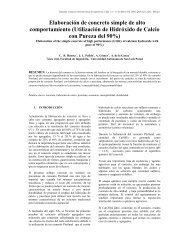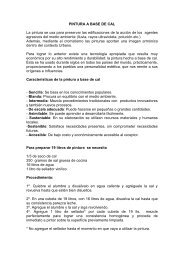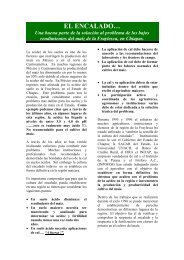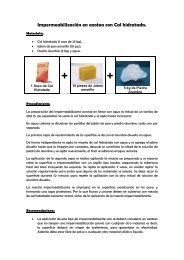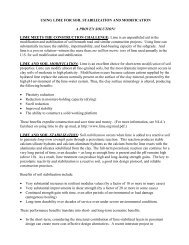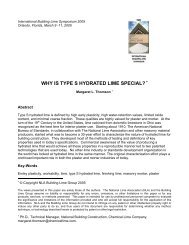Land Contamination: Technical Guidance on Special Sites: Acid Tar ...
Land Contamination: Technical Guidance on Special Sites: Acid Tar ...
Land Contamination: Technical Guidance on Special Sites: Acid Tar ...
You also want an ePaper? Increase the reach of your titles
YUMPU automatically turns print PDFs into web optimized ePapers that Google loves.
White Oil• <strong>Acid</strong> tar lago<strong>on</strong>s from white oil producti<strong>on</strong> generally follow the distributi<strong>on</strong> of oilrefineries in the UK which have typically been sited at coastal locati<strong>on</strong>s;• figures for acid tar producti<strong>on</strong> from white oil refineries are often not available as thefigures were generally incorporated into the overall figures for desulphurisati<strong>on</strong>;• estimates suggest that between 8,000 and 12,000 t<strong>on</strong>nes of acid tar were producedannually per refinery at the height of producti<strong>on</strong> in the 1950s at an estimated ten totwelve sites in the UK (annual total of around 100,000 t<strong>on</strong>nes of acid tar);• over the period 1930 –1980, there could have been as much as 2 milli<strong>on</strong> t<strong>on</strong>nes of acidtar produced in total;• in 1980 there were six refineries producing acid tars but by 1986 there was <strong>on</strong>ly <strong>on</strong>e.Box 2.3 Scenario: What quantity of acid tars might be found at a white oilrefinery?If we assume, based <strong>on</strong> the above, an average of 10,000 t<strong>on</strong>nes of acid tarsproduced per refinery per year, then a refinery operating over 40 years wouldhave produced some 400,000 t<strong>on</strong>nes of acid tars.A plant at Lviv in the Ukraine reportedly has 300,000 t<strong>on</strong>nes of acid tars thatwere disposed of over several decades (Internati<strong>on</strong>al C<strong>on</strong>ference <strong>on</strong> Analysis &Utilisati<strong>on</strong> of Oily Wastes, AUZO ’96, 1996).The former Sand Springs refinery in Texas, which operated from 1870-1940and was classed as a Superfund site, was found to have 100,000 cubic yards(around 90,000 t<strong>on</strong>nes) of acid tar out of a total of 135,000 cubic yards ofpetroleum wastes in several earthen pits. Sulphuric acid had been used to treatraw crude oil to polymerise unstable compounds. (Grajczak, PE. Remediati<strong>on</strong>of acid tar sludge at a Superfund site, Texas, 1995.)Re-refining• Informati<strong>on</strong> relating to historical re-refining sites in the UK is very limited;• during the Sec<strong>on</strong>d World War there were an estimated 30-40, mainly small, rerefiningplants set up to supply lubricating oils to the military. As governmentsubsidies were withdrawn and polluti<strong>on</strong> c<strong>on</strong>trol legislati<strong>on</strong> was tightened, many rerefiningworks closed. By the mid-1980s <strong>on</strong>ly <strong>on</strong>e re-refining plant remained inoperati<strong>on</strong>, producing 500 t<strong>on</strong>nes of acid tar per year;R&D <str<strong>on</strong>g>Technical</str<strong>on</strong>g> Report P5-042/TR/04 11



